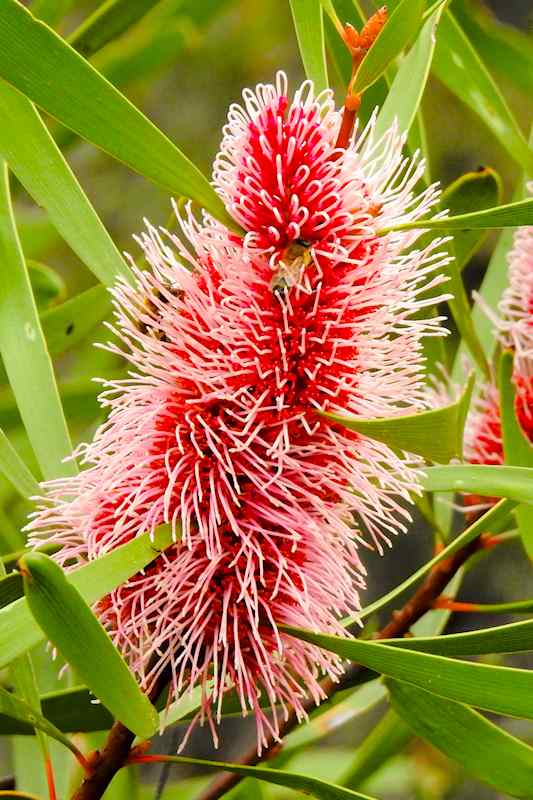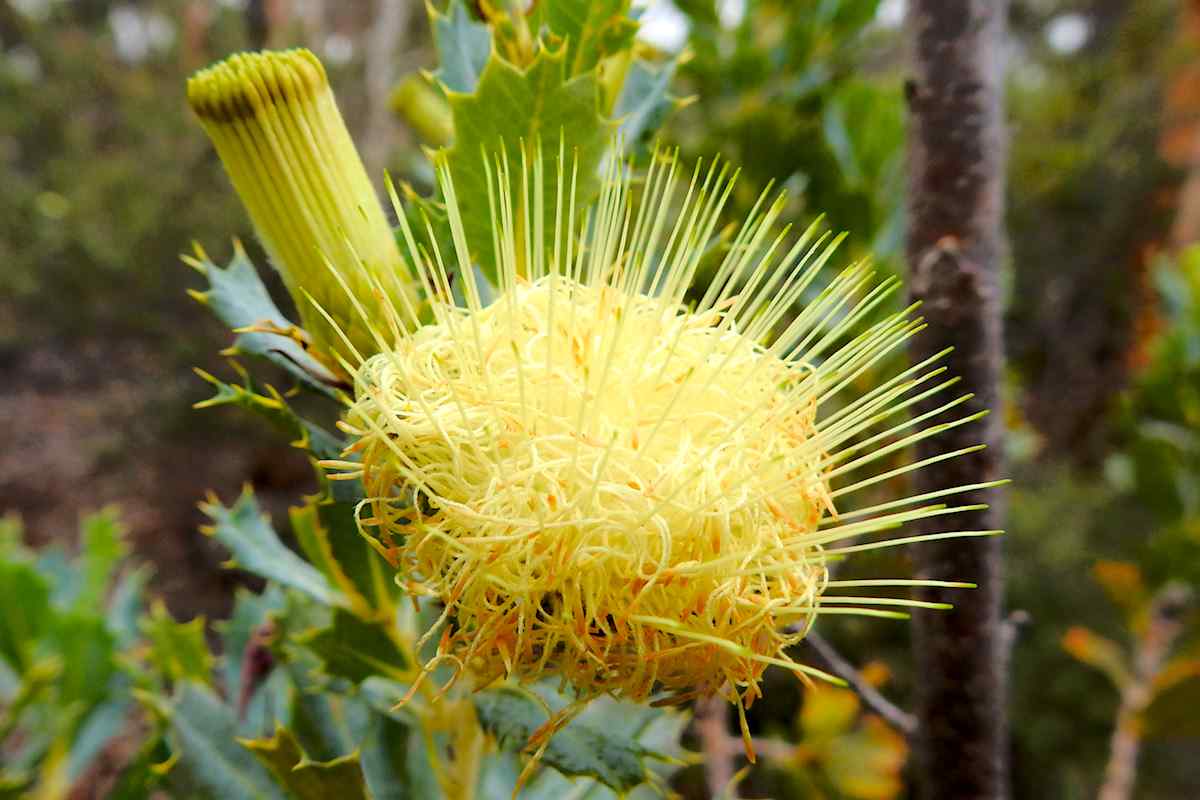I am still enjoying travelling around on the inland country roads. I headed to the town of Southern Cross, named after the prominent constellation in our winter night sky.
Although not as famous as some other gold mining towns in the region, Southern Cross does have the distinction of being the first. Not far from here, gold was discovered and began the earliest rush to this area.
Golden Valley
Golden Valley was actually named for the profusion of yellow wattle flowers blooming on the surrounding ridges.

But this was once an important place. It was here in this rather idyllic spot that gold was first discovered in 1887.
As the news spread, hundreds of hopefuls flocked here with dreams of striking it rich. It was a long way from anywhere then and it still is.
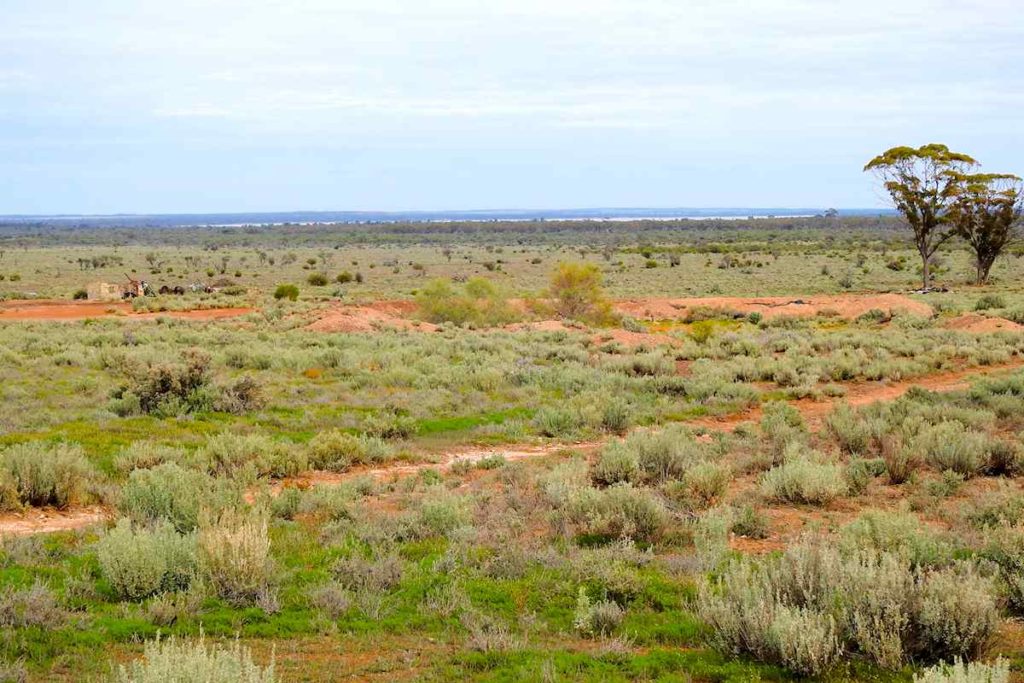
Most simply walked hundreds of miles to get here; many without any idea of the hardships they faced.
This is tough country, with little water. Water, or lack of it, was the biggest problem in Golden Valley. The Government had sunk a well 10 miles away and all water had to be physically carried from this only supply!
It is unknown how many people joined the initial rush to this pleasant valley. Sadly, the gold here proved too sparse and most would never find riches in Golden Valley.
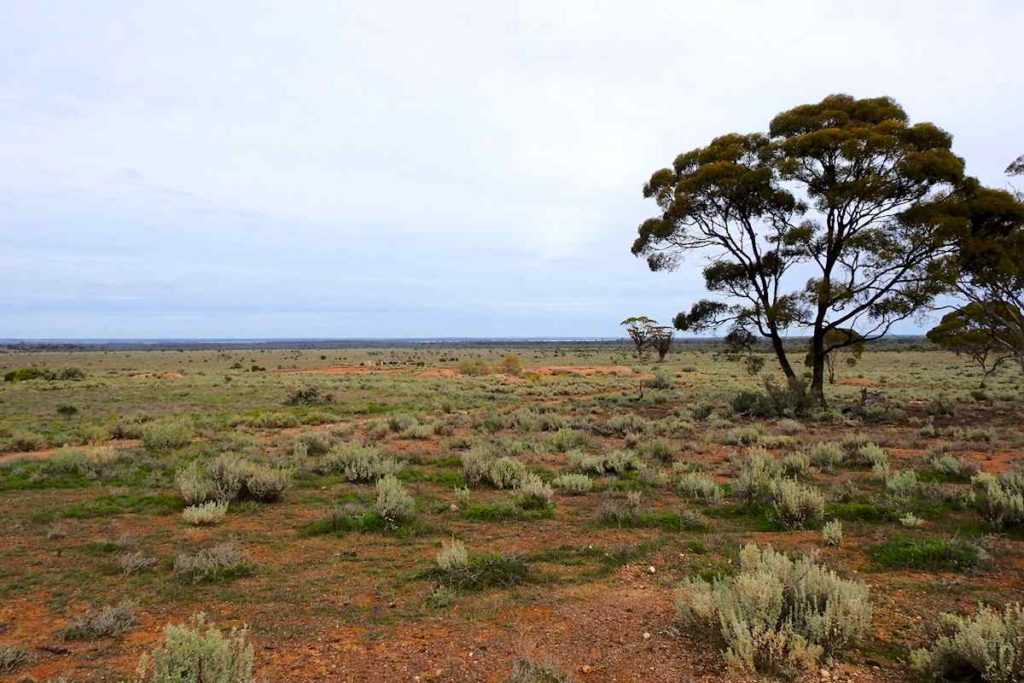
When gold was discovered near Coolgardie and then Kalgoorlie, the miners headed in droves to those more prosperous goldfields. By 1903, the Census showed the population of Golden Valley was just 5.
When I visited, after stumbling along rocky and rutted roads, there is little evidence to suggest that anything had ever happened here. It is certainly a beautiful spot and very quiet and peaceful today.
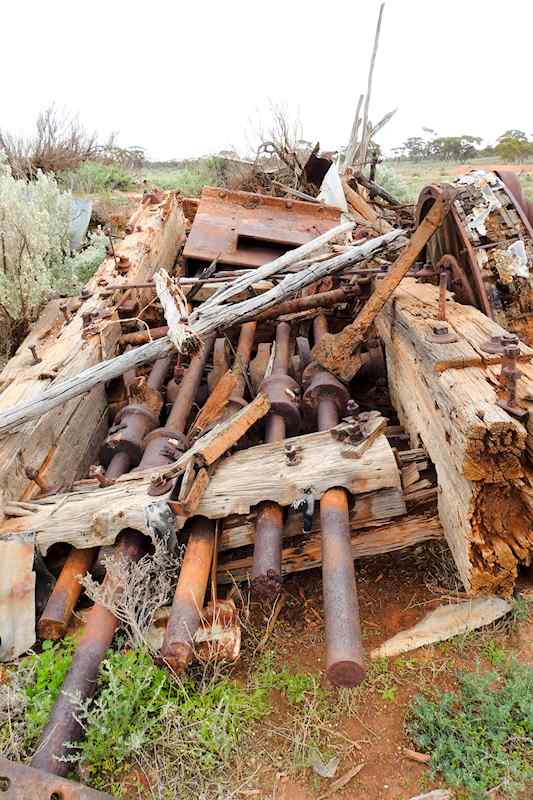
I did find the old stamping battery, used to crush the rock to free the gold, sadly broken and decaying in the undergrowth.
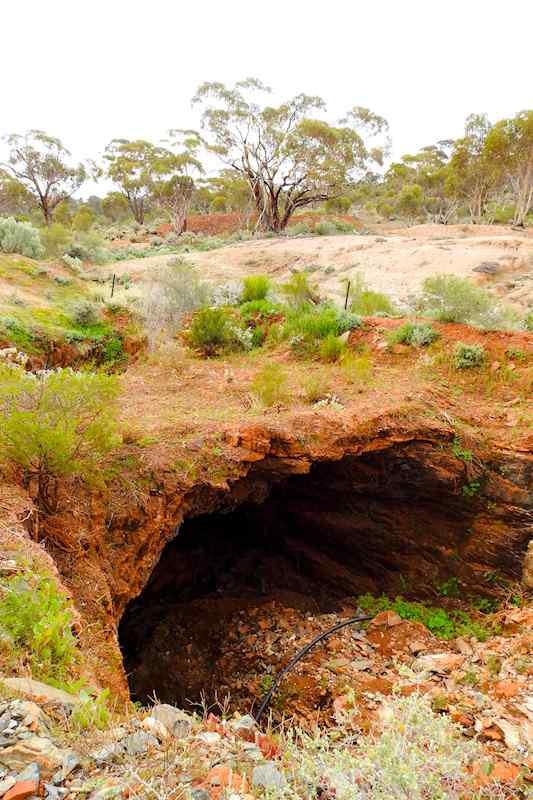
It would be very easy to stumble into the original diggings – literally! With no safety fencing or warning signs, the gaping hole is rather forbidding…
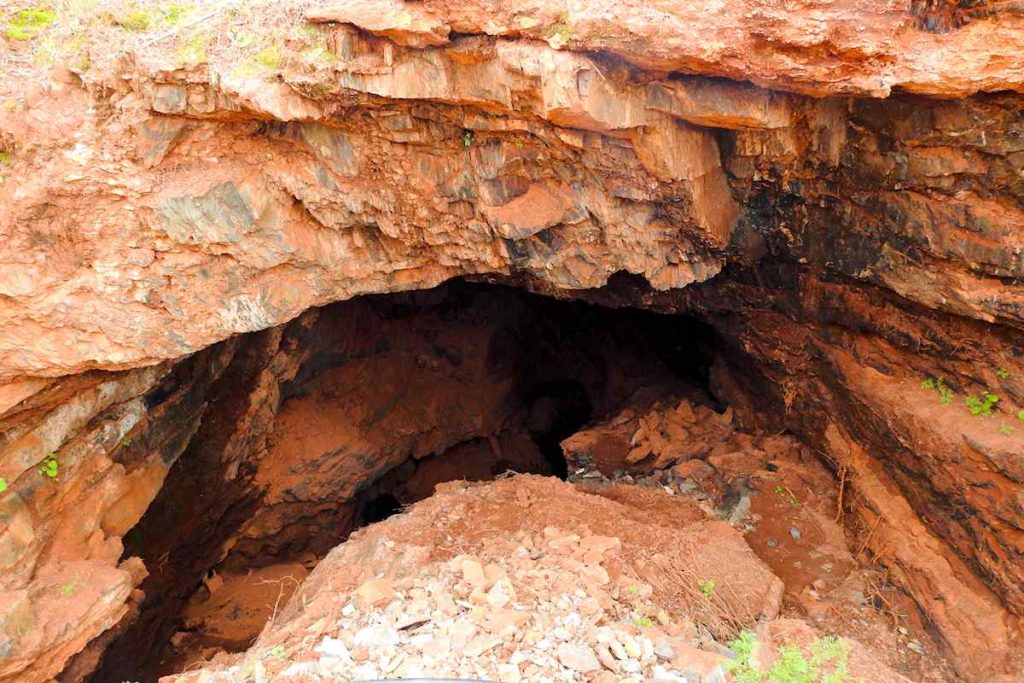
Mount Palmer
Mr Augustus Palmer, a renowned prospector, discovered gold here in 1934. The town that sprang up virtually overnight in response to the gold fever was named in his honour. At its height, the population of the town was estimated at 500 people.
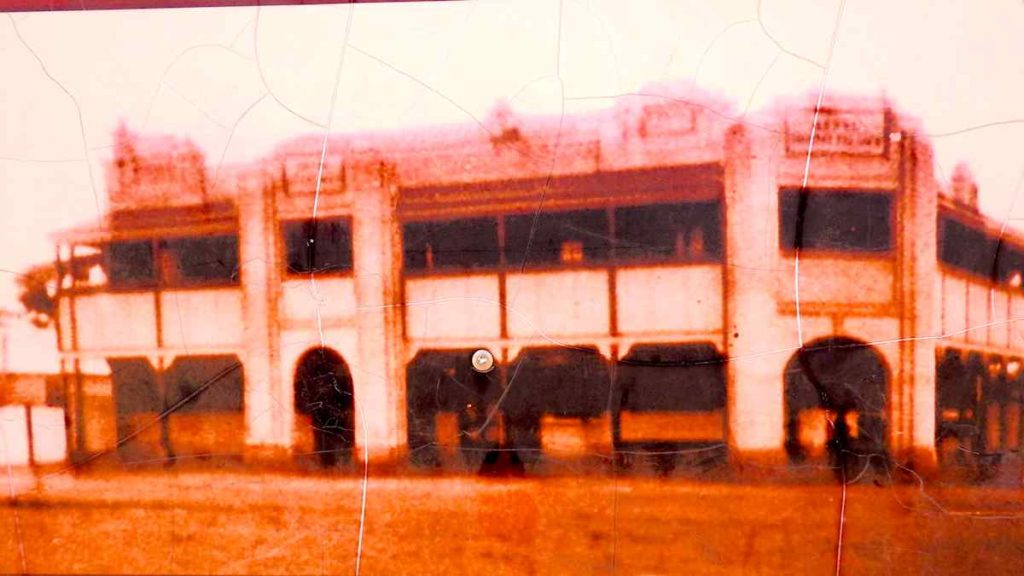
I knew a hotel had been constructed here and I had seen period photographs (like the one above) showing how impressive it was. Built entirely of brick, it had two stories with wide verandas and a façade with two imposing arches.
The pub must have reflected the optimism of the time and while it operated, this was a productive and rich mine.
But sadly, the gold only lasted 10 years and the mine closed in 1944. Mount Palmer became a ghost town virtually overnight.
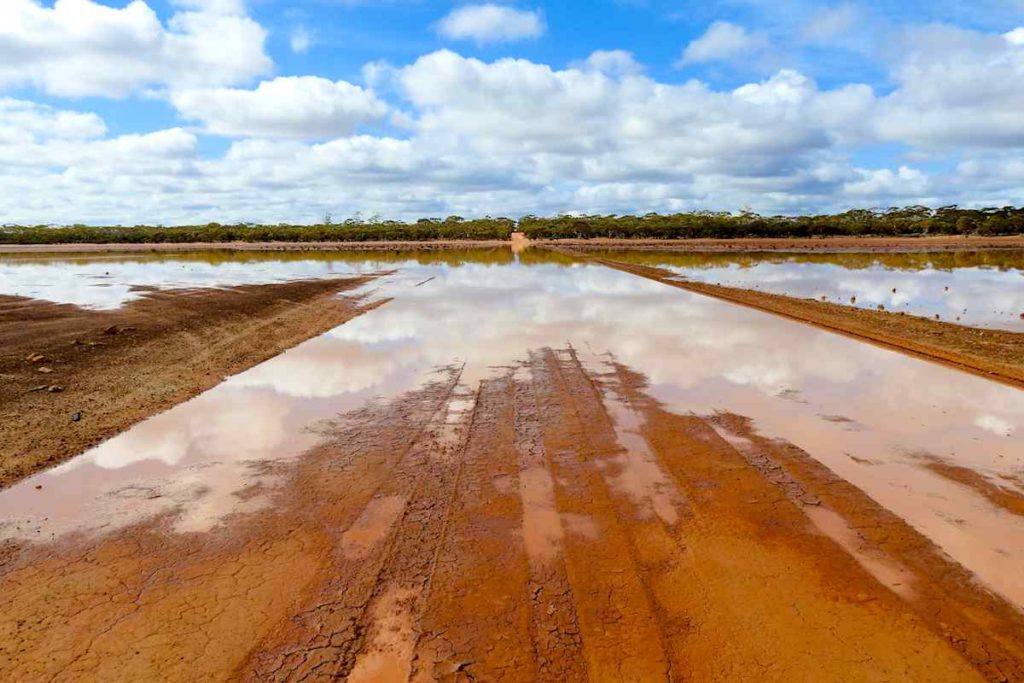
It was a difficult drive in remote country to find Mount Palmer; the road was covered by water from recent rains.
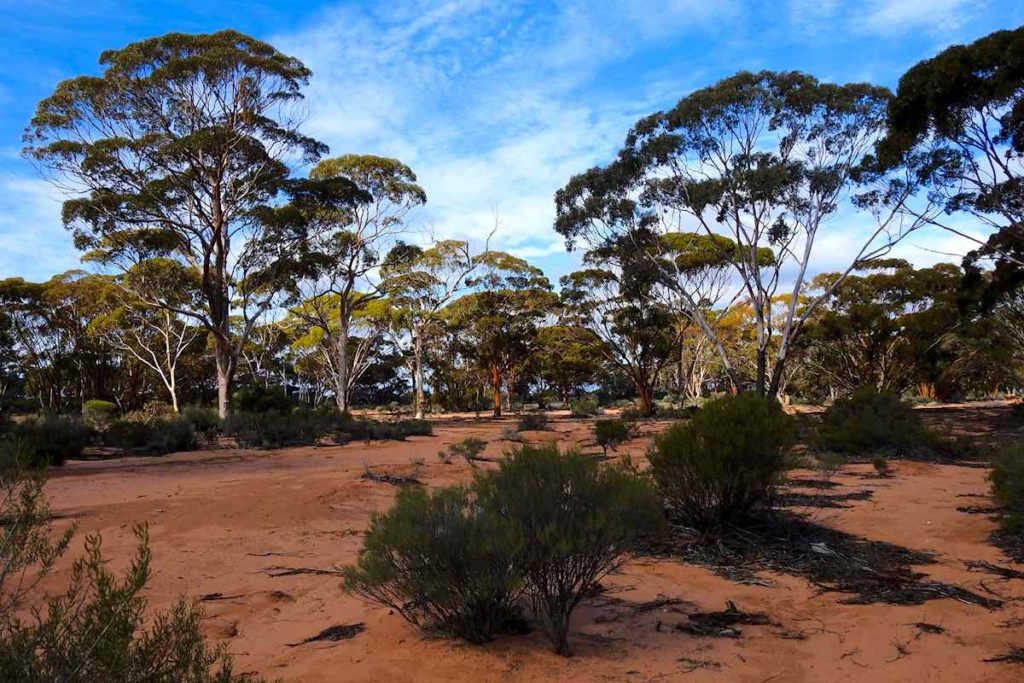
When I arrived, there is little evidence that a town existed here at all and nature has certainly reclaimed the streets.
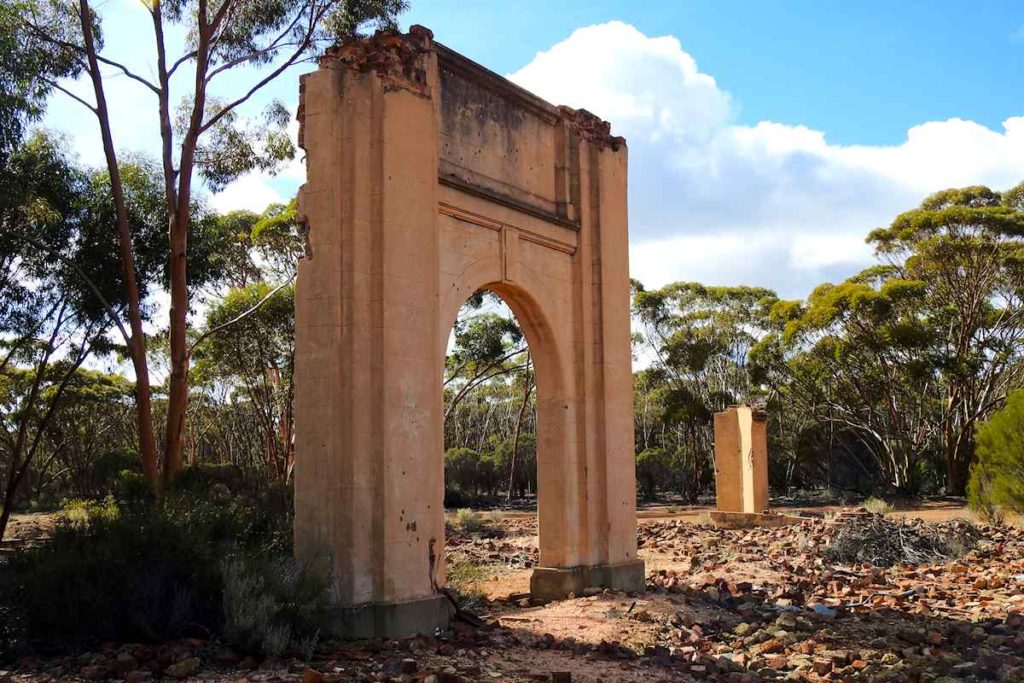
However, one archway from the impressive hotel still stands resolute amongst the trees, a poignant reminder of how impressive this place must once have been.
Water Soaks
Rainfall is scarce and unpredictable in this country. In 1864, explorer Charles Hunt and his companions established a series of water soaks or wells across this arid region. Often using Aboriginal people to guide them, they used dynamite to enlarge small waterholes or dug and lined wells with stone.
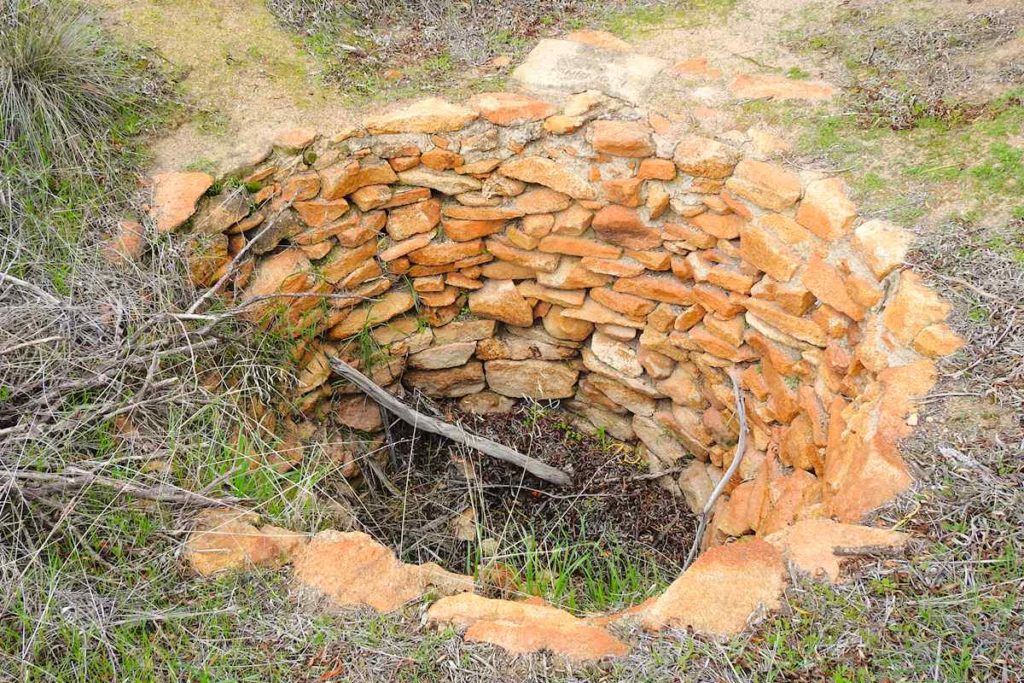
Many of these soaks still survive and some still display beautifully laid stone work.
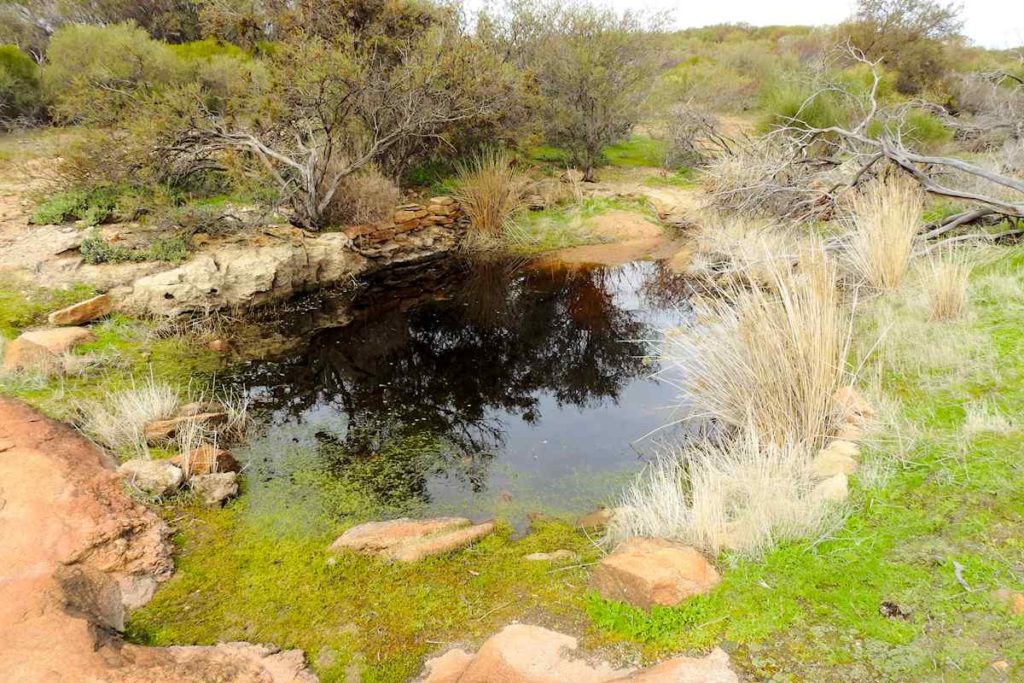
They may not look like much, but these soaks were often the only source of water available for people and their livestock. It wasn’t until 1903 that the pipeline built by C Y O’Connor (which I have written about previously) brought abundant water to the area.
More Big Rocks
There are lots of big granite rocks sticking up out of the country in the area. So many in fact, that they all begin to look very similar! I have written of a few of these rocky outcrops previously, so I try to pick the best ones to visit.
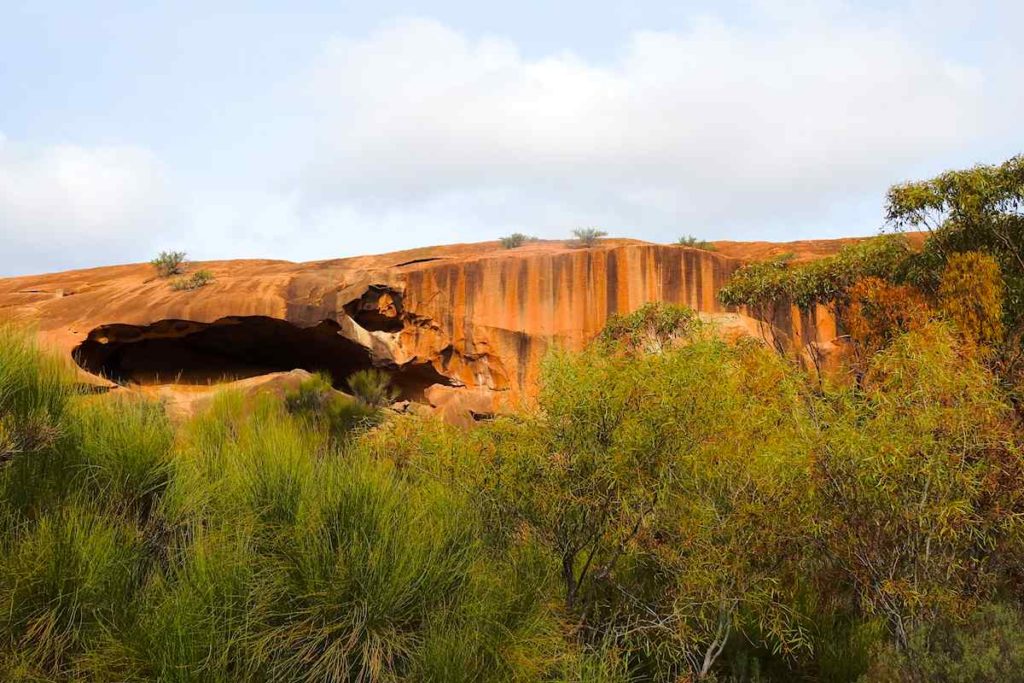
Certainly Baladjie Rock is one of the more impressive. The name is Aboriginal in origin, but the meaning is now lost.
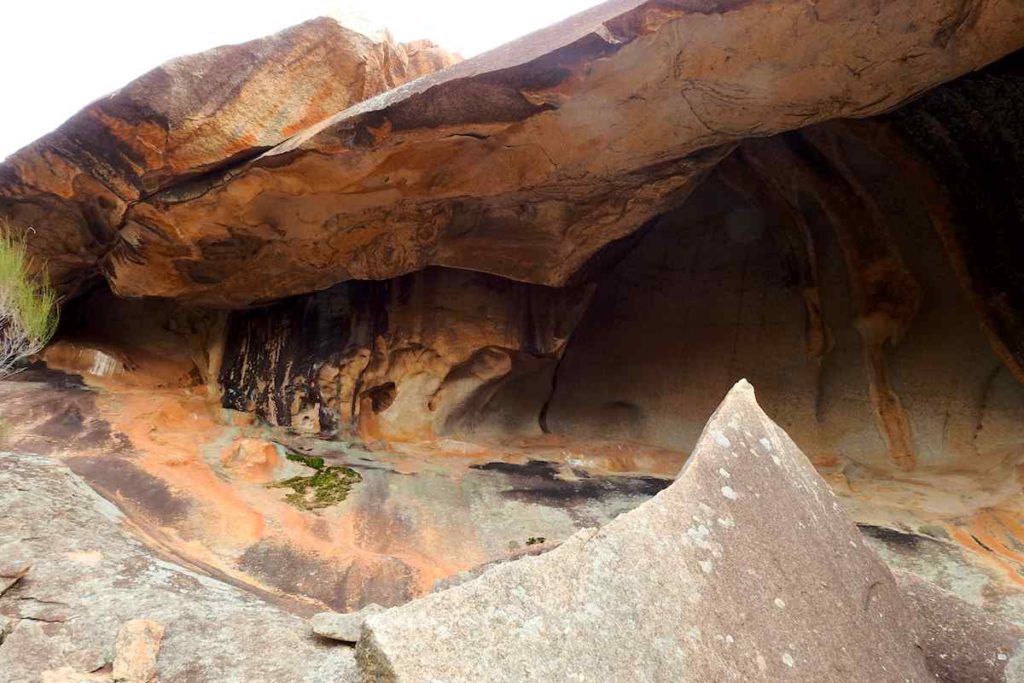
Walking around the rock, there are many amazing overhangs, with evidence of some spectacular past collapses, sheer rock walls and spooky caves, making this a spectacular place to visit.
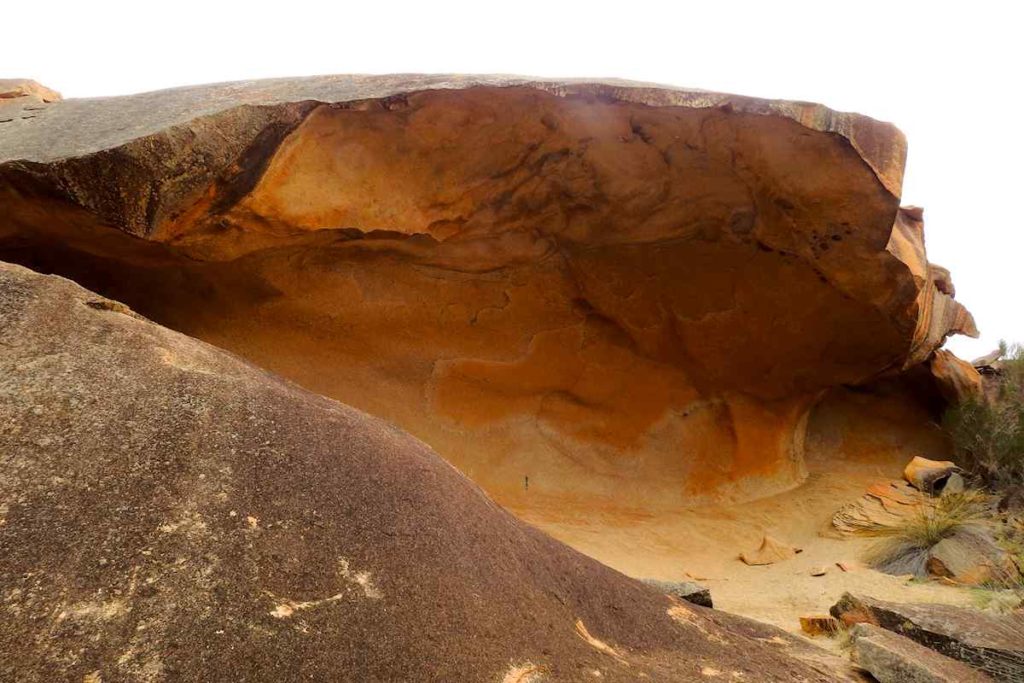
I wandered up the steep, bumpy slope and was rewarded by a spectacular view out over the salt lakes that form at the base of the rock. On the rock itself, there are pools that collect in cavities after rain. Known as ‘gnamma’ holes, these were an important source of water for the Aboriginal people living in the area.
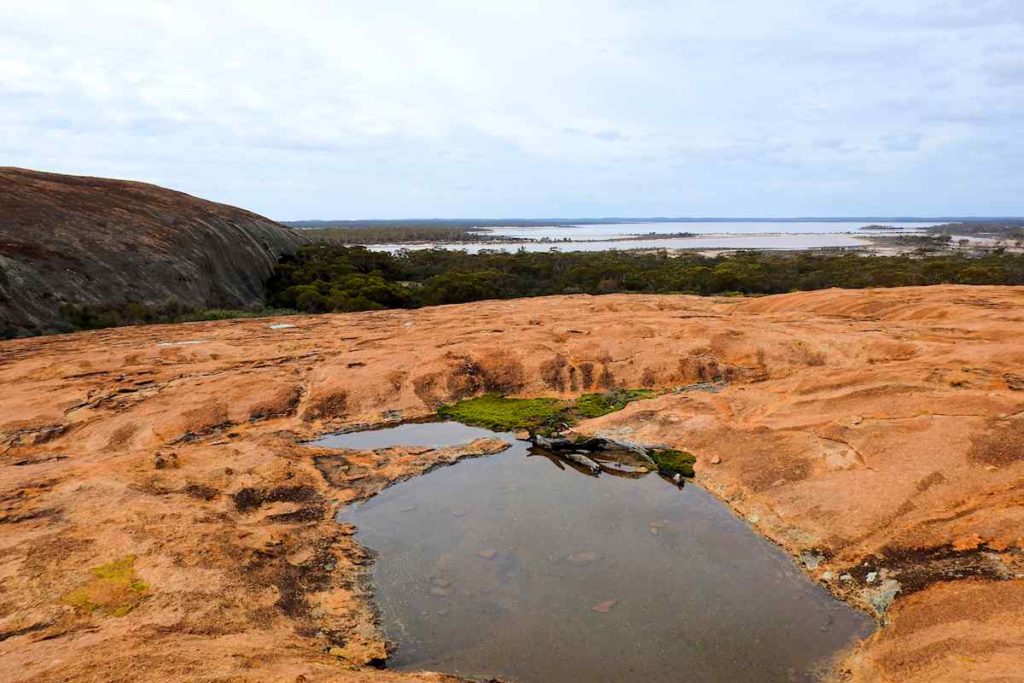
The moisture is also welcomed by many different species of mosses that grow on the granite.
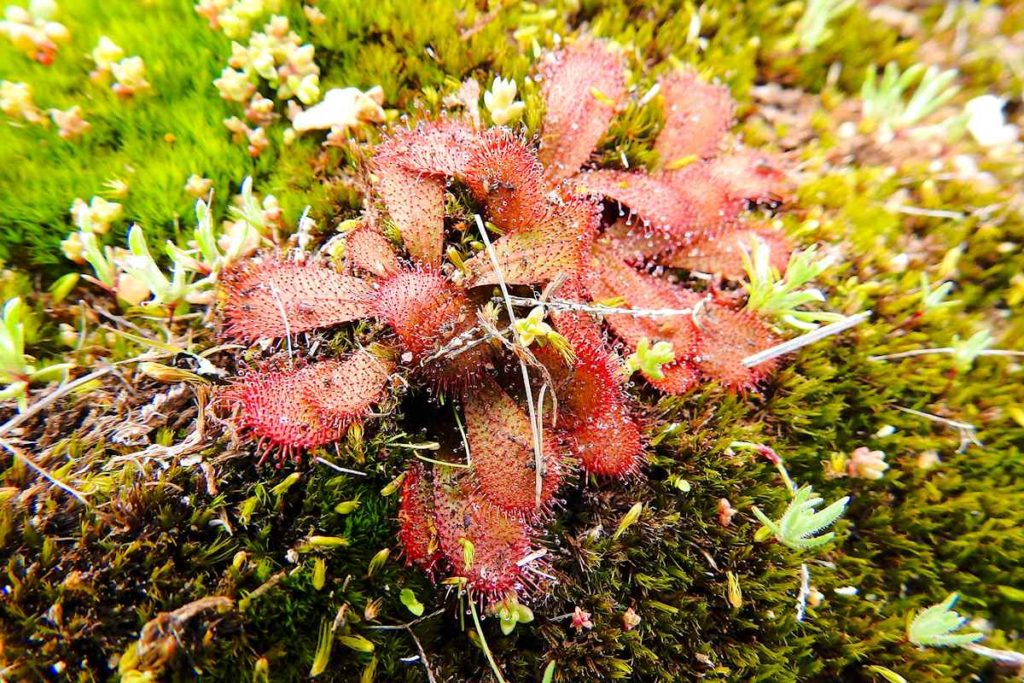
Plane Crash
Travelling down a dusty dirt road, I saw a sign pointing to the “Vultee Vengeance crash site”. I had no idea what this referred to, so I decided to follow the sign and see what I discovered! A rough track leads to a plaque that describes this event.
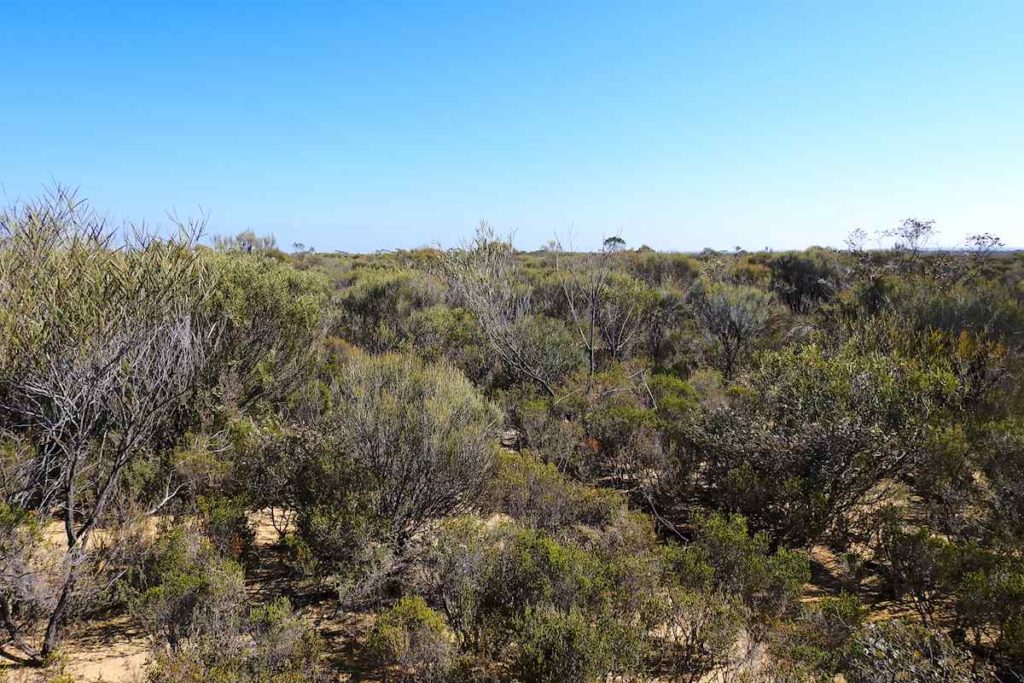
The Vultee Vengeance was an American built, single engine dive bomber aircraft used in Australia during WW2. In 1944, one of these aircraft was on a training mission when the pilots became lost and the plane ran out of fuel.
Both the pilot and navigator bailed out and the plane crashed into this remote bush. The pilot survived, spending four days walking for help, without food or water. No trace of the navigator has ever been found.
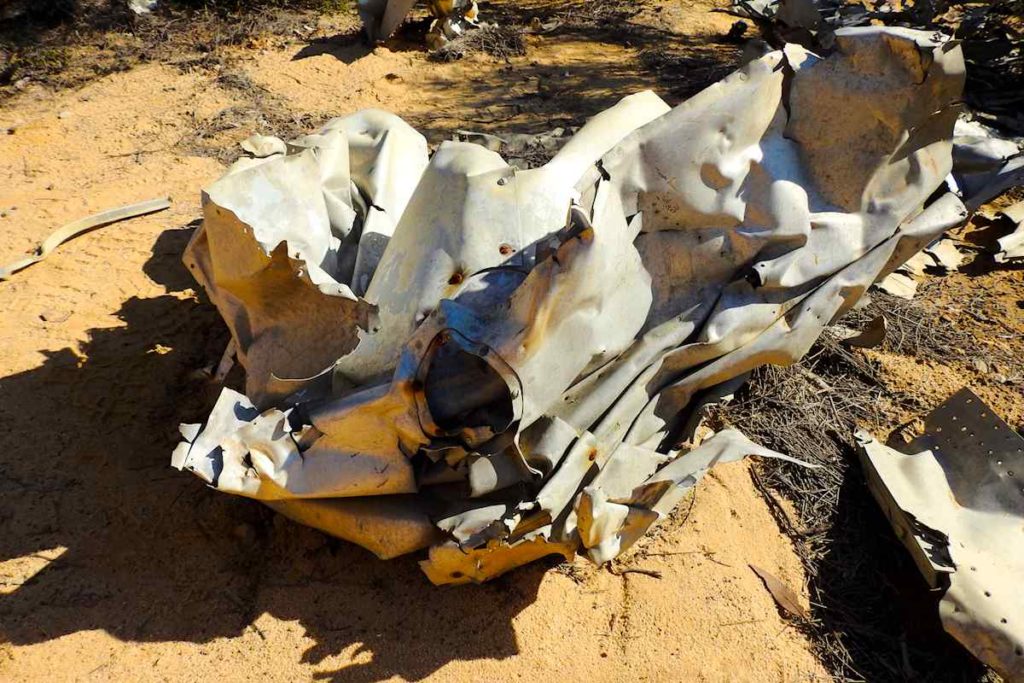
Looking around, there are bits of wreckage strewn over the area but not much of the plane survives here. Even today, this place is a long way from anywhere and I could certainly feel for the two men, knowing how far they were from civilization.
Wildflowers
There are plenty of wildflowers appearing around the countryside.
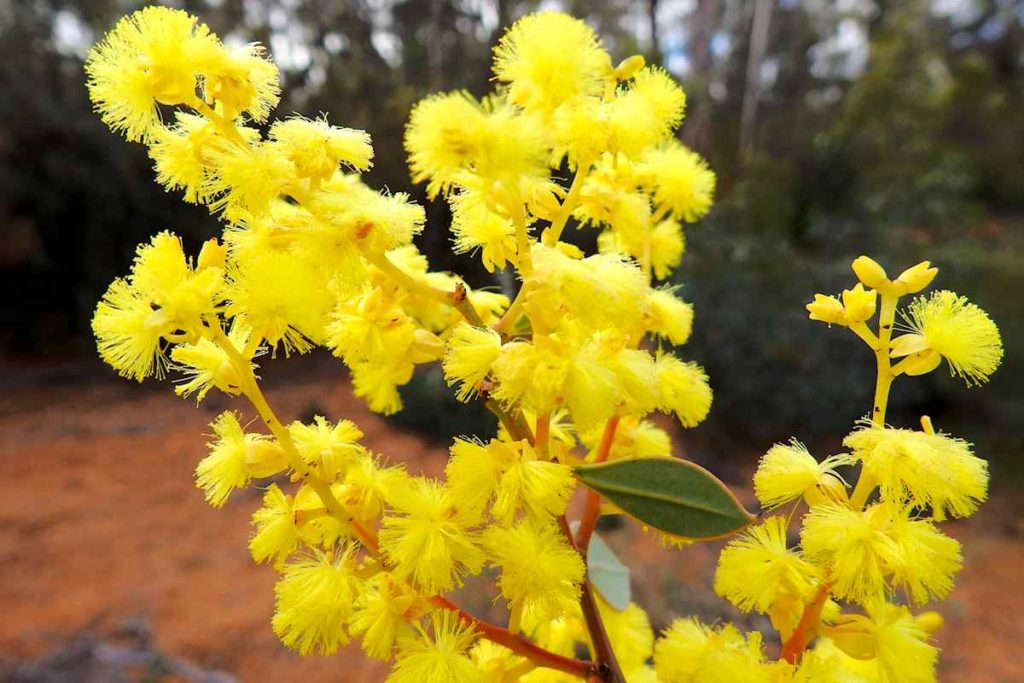
At the moment, the predominant colour seems to be yellow (which fits nicely with the gold theme of this post).
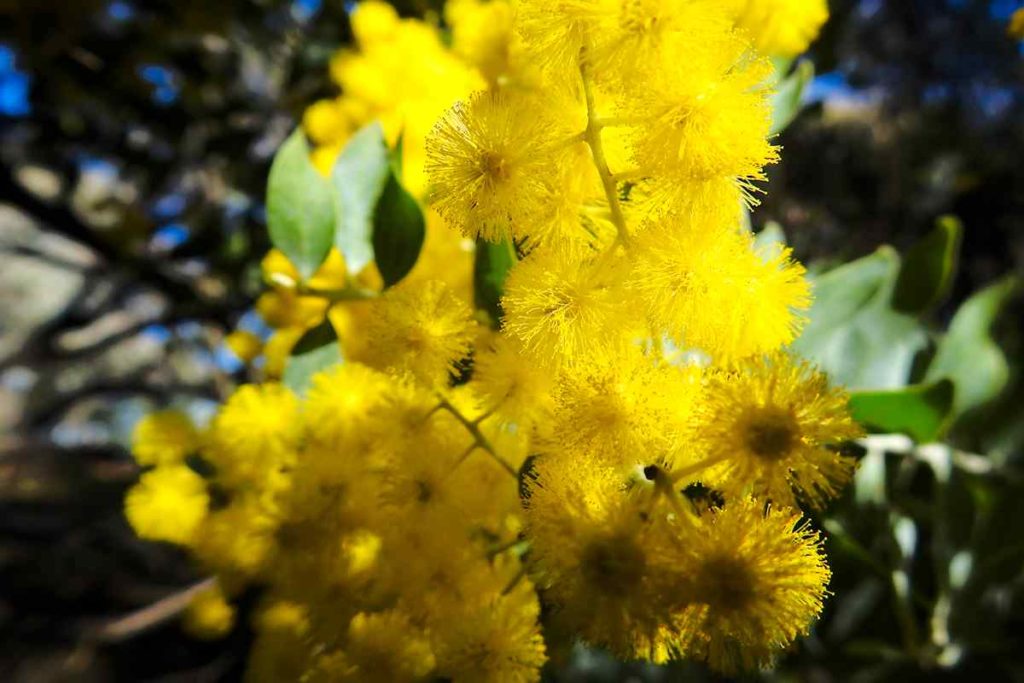
I have no idea what most of them are, so I probably need to buy a wildflower guide book, so I will just share a few photos with y’all anyway.
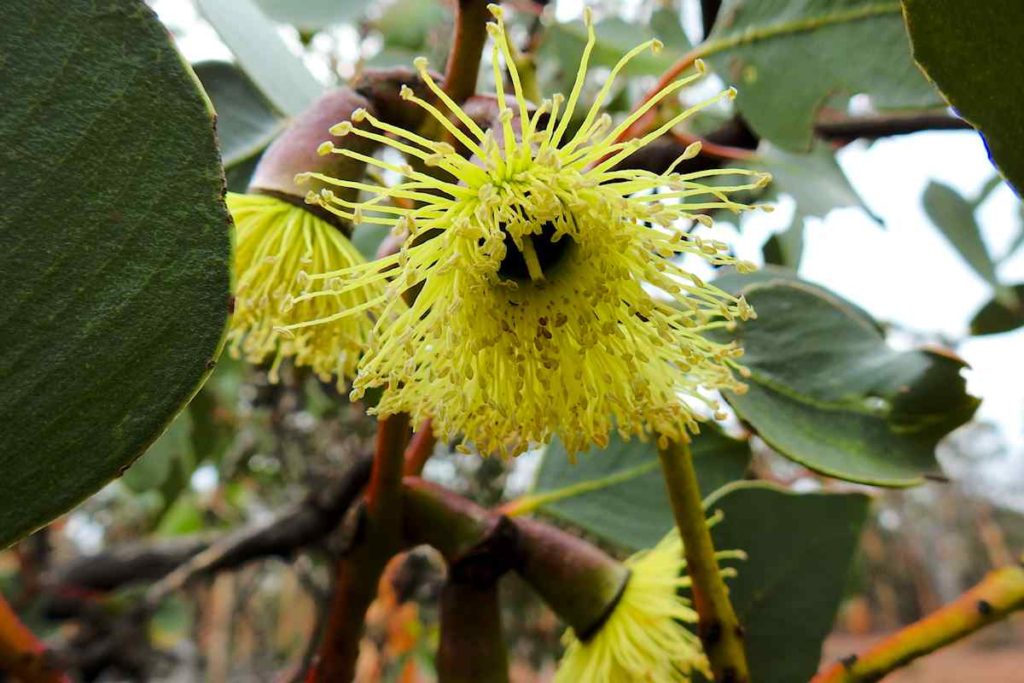
A few people have asked why I haven’t posted any sunset images recently.
Due to circumstances, mainly lots of very cloudy or rainy weather, I actually haven’t seen any worthwhile sunset photo opportunities lately!
Don’t despair though; I am sure the weather has to get better soon…
